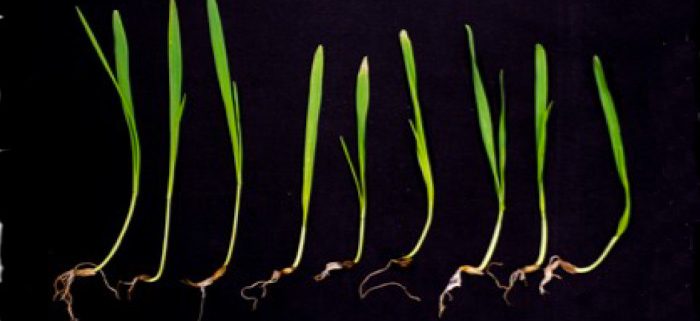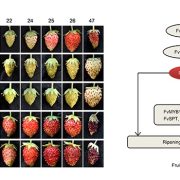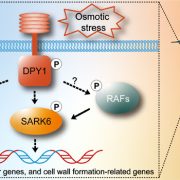MAPKs target a viral nucleoprotein for defense
Ding et al. explore how MAP kinases affect virus propagation in plants and animal hosts.
Zhi-Hang Ding, Xian-Bing Wang, State Key Laboratory of Agro-Biotechnology, College of Biological Sciences, China Agricultural University, Beijing 100193, China
Background: Mitogen-activated protein kinase (MAPK) cascades participate in conserved signaling pathways that transmit extracellular stimuli to produce intracellular responses in eukaryotes. The signaling outputs are mainly determined by the functions of the protein substrates phosphorylated by MAPKs. Therefore, identification of MAPK substrates is important for understanding the complex regulatory functions of MAPK cascades. Barley yellow striate mosaic virus (BYSMV), an important member of the genus Cytorhabdovirus, infects more than 25 cereal species and multiplies in its insect vectors, the small brown planthoppers (SBPH, Laodelphax striatellus). The regulatory mechanisms of MAPK cascades and their substrates in BYSMV cross-kingdom infections remain to be uncovered.
Question: We wanted to know whether MAPK cascades directly target viral proteins as phosphorylation substrates and regulate virus–insect–plant interactions. How does phosphorylation of viral proteins regulate replication of BYSMV in plant hosts and insect vectors?
Findings: BYSMV infection activated MAPK cascades in plants and insect vectors. The MPK3 protein of barley (Hordeum vulgare) plants (HvMPK3) and the ERK protein of SBPHs (LsERK), two MAPKs, interacted with and directly phosphorylated the MAPK/ERK nucleoprotein (N) on the serine 290 residue. Overexpression of HvMPK3 inhibited BYSMV infection, whereas barley plants treated with the MAPK pathway inhibitor U0126 displayed enhanced susceptibility to BYSMV. Moreover, knockdown of LsERK promoted virus infection in SBPHs. A phosphomimetic mutant of the N ser290 (S290D) completely abolished virus infection because of impaired self-interaction of BYSMV N and unstable N–RNA replication templates.

Model for how phosphorylation of the viral nucleoprotein N by kinases from the plant or insect host (HvMAPK and LsERK, respectively) affect replication of the virus BYSMV.
Next steps: We are eager to know how rhabdoviruses evade MAPK-triggered immunity for effective cross-kingdom infections. In future studies, we aim to improve plant resistance by inducing MAPK cascades and regulating the ongoing arms race in virus–insect–plant systems.
Reference:
Zhi-Hang Ding, Qiang Gao, Xin Tong, Wen-Ya Xu, Lulu Ma, Zhen-Jia Zhang, Ying Wang, Xian-Bing Wang (2022) MAPKs trigger antiviral immunity by directly phosphorylating a rhabdovirus nucleoprotein in plants and insect vectors. The Plant Cell. https://doi.org/10.1093/plcell/koac143








